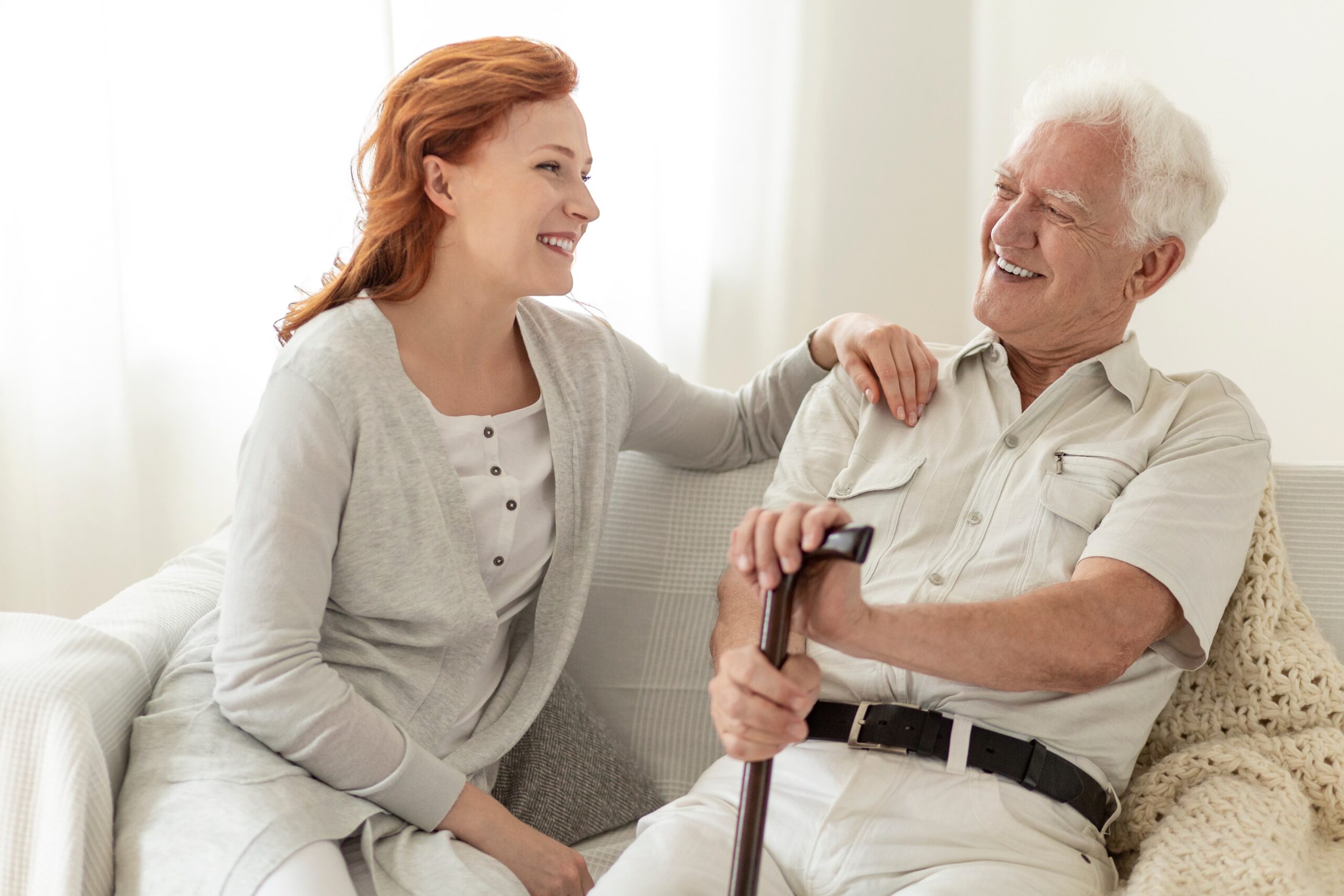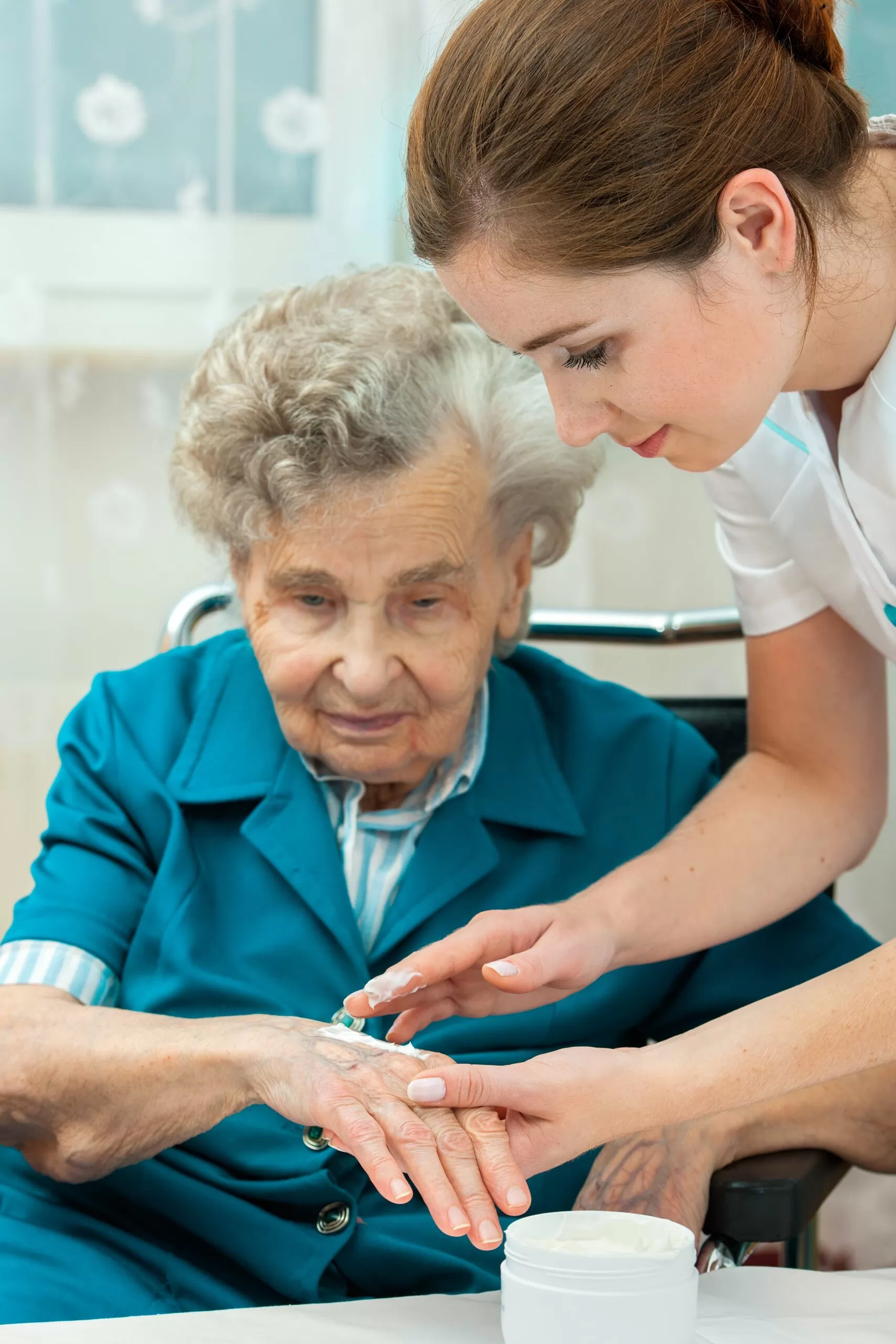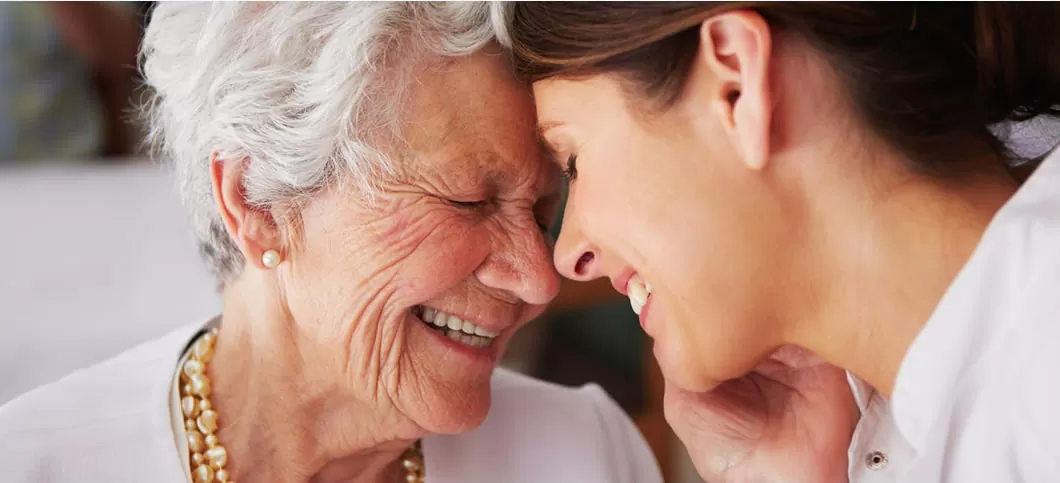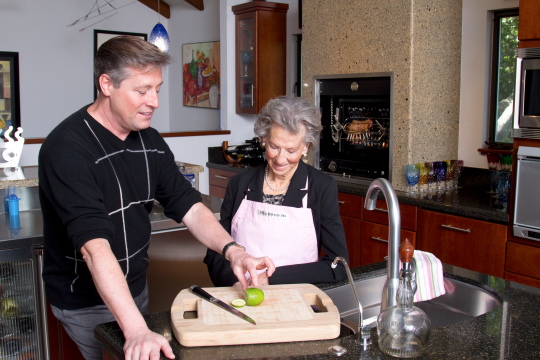According to the Centers for Disease Control and Prevention, 85% of older Americans have one or more chronic condition. This also applies to the one in five adults that AARP estimates serve as unpaid family caregivers. Sadly, many of them have Alzheimer’s disease and related dementia, which can be quite challenging to deal with. Fainting due to dehydration, falls and other forms of accidental trauma are reported to be the leading cause of hospitalization for Alzheimer’s patients, even though they are preventable. If you are caring for a loved one, it’s important you get some respite care as the stress can be intense, particularly if you are caring for someone with Alzheimer’s disease.
Democrats Pushing Legislation For Paid Time Off For Caregiving
The Democrats are renewing their push for a national paid time-off policy for medical reasons and caregiving, although the odds are against them being able to pass it due to the Republicans, which oppose this measure, control the House of Representatives. Former President Bill Clinton signed into law more than three decades ago the Family and Medical Leave Act, which provides 12 weeks of leave a year for medical and family reasons to workers at larger companies. However, it’s unpaid leave and a group of Democrats is trying to get this changed to paid leave. “The fact that we still stand on what is now a piece of legislation that has largely remained unaltered for the last three decades is pretty atrocious,” Rep. Chrissy Houlahan (D., Pa.) told The Wall Street Journal.
Medicare AARP Plan Attacked From An Unexpected Source
We all know how hard it is shopping for a supplemental Medicare Plan, also known as Part D. The Wall Street Journal recently took issue with AARP’s marketing of products like health, life and auto insurance, saying, for instance that the AARP MedicareRX Preferred Plan, insured by UnitedHealth Group Inc., carries the highest premium among all national stand-alone Medicare drug plans. AARP has advocated that the 1.74 million members who make up 9% of the market for Part D plans should switch to a cheaper policy. Kaiser Family Foundation backed up this opinion stating in a report that, “We’re certainly at the point where this AARP plan is so expensive that it’s likely that most people in it could save money by switching,” according to Juliette Cubanski, co-author of a report on the issue.
Inflation Hitting Caregivers Hard : Get Long Term Care Insurance (LTC) If You Can Afford It
Inflation is at the highest level that we have seen in more than four decades, and it is taking a toll on family caregivers. It’s so expensive, in fact, that Amy Goyer—AARP’s family and caregiving expert and an author of two books on the subject—had to file for bankruptcy after taking care of her parents. Once she ran out of money, she started putting expenses on credit cards and things got out of control. “I am a caregiving expert. How did I end up in bankruptcy?” she told the Wall Street Journal. People are living longer, which can be a blessing but also a curse. After more than a decade of caring for her mother, who had a stroke, her father was diagnosed with Alzheimer’s so she had the burden of caring for two parents. There are 53 million family caregivers in America who provide $470 billion per year in free care. On average, caregivers spend 26% of their income on caregiving expenses, according to a 2021 AARP study. The median average cost of care rose 18.5% from 2016 to 2020 and now stands at $55K per year, according to Long Term Care Insurance (LTC) Genworth. Get LTC Insurance while you are still young and its more affordable.
Pacific Grove, CA Family Caregivers Face Heartbreaking Journey With Alzheimer’s Disease, Often Ending Up In Hospice
There was a heart breaking article in the Wall Street Journal recently. It featured Nick Clement, age 78, who has cared for his wife Lucy for the past decade. Lucy has Lewy body dementia as well as Alzheimer’s disease. Nick wanted to take care of his wife, however, he quickly found out how difficult it is taking care of someone who is slipping rapidly into dementia. As her disease progressed, she was unable to brush her teeth or comb her hair, so Nick did that too. He said that some friends stopped calling, which can be heartbreaking. Eventually, after Lucy had dropped from https://www.homecaremag.com/june-2021/buzz-vibration-therapy125 pounds down to 90, it took its toll on Nick who was gaunt and depressed. He had to call in hospice which took over Lucy’s care. Hospice asked Nick if he had told Lucy it was OK for her to go. He had not, but went to her room and looked into her eyes and told her he would be alright, it was OK to go. Sadly, she died the next morning. Unfortunately, most of us will have to go through this with a family member. If you need help, CHOMP has a service called Hospice of the Central Coast, as does the Visiting Nurses Association (see links below). Please reach out for help if you need it, they both have compassionated caregivers.
Family Caregivers Should Take Advantage Of Online Resources
Thankfully, technology is coming to the rescue in the form of a number of online resources which help you juggle a lot of balls at the same time. There are a number of videos on YouTube which can help you navigate difficult problems like making sure your loved one gets enough exercise, eats right and gives you tools to deal with declining cognitive function. Another resource is an online community of women caregivers called Working Daughters who have a private Facebook group to discuss various issues. “Everyone has questions,” says founder Liz “`O’Donnell. “Am I doing enough? Do I leave them in nursing care? Do I bring them home?” are frequently asked questions. AARP is another resource. They began doing live Facebook interviews during the pandemic, including one on finding respite care, another on spotting fraud and one on pureeing food. And if all else fails, talk to other family members and tell them the difficulties that you are facing.
https://www.wsj.com/articles/the-new-tools-for-helping-aging-parents-1162574960
Pebble Beach, CA Tips For Warding Off Dementia And Alzheimer’s Disease
Everyone wants to keep their brains working in full order as long as possible, and the key can be healthy living, getting the proper amount of exercise and social interaction. The latter is easier said than done given the massive spreading of coronavirus. Although board games can be fun, with COVID-19 many seniors are turning to video games. According to an AARP survey, 44% of adults over the age of 50 played video games in 2019 versus 38% in 2016. That’s 10 million more older gamers! About a quarter of gamers play multiuser games, which can increase social interaction which will hopefully ward off early onset of Alzheimer’s Disease. Regular readers of my blog know that both my father and grandmother had this terrible disease when they passed away. There are great people at our local chapter of Alzheimer’s Association in Ryan’s Ranch. They also have a 24-hour hotline if you need support at 800-272-3900.
The History Of Family inHome Caregiving: Part 3 : Alzheimer’s
Working in this industry really takes a toll on a person after a while and I have been working in this industry on and off for over twenty years. There is a lot of things that happen that surprises people that do not work as a caregiver or as a hands-on owner of a Home Care Organization like I have in Carmel, California. One such circumstance happened when I was working for a Skilled Nursing Facility on the Alzheimer’s wing (now it is call a memory ward). I was making my rounds in the early afternoon helping our patients with eating and getting cleaned up after lunch when all of a sudden, I heard a loud scream at the other end of the hall, so I took off to see what the commotion was. As I was walking fast down the hallway, I heard a thump as if someone fell to the floor. When I came around the corner and looked in the room, one of our patients was on top of her husband who had fallen to the floor. She was having a very violent episode and was attacking her husband and did not know who he was. I called for some help so we could stop her and get her back into bed and the nurse came in to give her some medication to calm her down. This might not seem so strange to those that know Alzheimer’s disease, but what made this surreal to me at the time was that his wife was only about 5’3” and weighed about 95 lbs. and the husband was a big man (about 6’2” and weighing about 190 lbs.), so to see him on the floor with her on top of him was a shock to me. After everything calmed down, I asked him what had happened. He said that he came into the room and gave her a kiss hello and then turned around to go open the window a little to get some fresh air. As he turned and approached the end of the bed, he heard her scream, by the time he turned around to see what was going on, she was standing on top of the bed at the end and jumped onto him causing him to lose his balance and fall down (fortunately no one was hurt) to the floor with her on top of him. She just keep hitting him until we were able to remove her. I am amazed at the things that happen when a person that has Alzheimers disease acts out. As regular readers of my blog know, I took care of my Grandmother in my home in Carmel Valley (used to be Salinas, they keep changing our zip code) for 5 years. She was diagnosed with Alzheimer’s when she was about 92 and there was times that she would go through stages of paranoia, screaming fits, trying to leave by calling cabs, and a variety of other acts that were very strange. The one thing that people that are working with family members, loved one, patients or clients, need to remember is that it is the disease that makes them act out in these strange ways. There are medications that can help. Once we were able to get Nana on a regimen of the correct medications and the correct doses, we were able to start having a better time, but it took a while to get there. Up until about the last month we were going out to dinners on Friday’s which she loved to do. She had her favorite places, some in Pacific Grove and Carmel-by-the-Sea, and Carmel Valley. So, for all of you family members that are taking care of a loved one that has Dementia or Alzheimers remember to take some respite, you need to take care of yourselves in order to be able to take care of your loved one. It is not an easy task. The emotional, mental, and physical tasks take a lot out of a person and you will not be in the best shape for your family member or loved one if you do not take care of yourself also. There are companies like mine, Family inHome Caregiving of Monterey, that can come in and take care of your loved one from a few hours a day and up, so you can take that time off to regenerate your batteries and come back refreshed and start anew. To learn more about myself and my company click here:
https://familyinhomecaregiving.com/the-history-of-family-inhome-caregiving-part-1-the-rocking-chair/
and here:
https://familyinhomecaregiving.com/the-history-of-family-inhome-caregiving-part-2-the-race-is-on/
The History Of Family inHome Caregiving : Part 2 The Race Is On
I first started working with seniors way back when I was 18 years old and I worked at a skilled Nursing Facility in Tigard Oregon. The staff used to try and come up with things to entertain our clients, so we decided to ask some of the patients if they would want to come up with ideas for us to entertain them during slow times in the afternoon. One of the residents asked if we could have races in wheelchairs and we thought that would be a fun idea, so the race was on. The patients liked that idea and some of them started betting on the winners (a penny for the winning wheelchair that crossed the line first), like if they were at a horse race. The hall we used was about 100 feet long and about 8 feet wide which could accommodate two wheelchairs. We would move obstacles out of the hall to make it safer to wheel down and back to the finish line. The patients asked us to use their wheelchair so they could feel a part of the race itself. We had a good time doing this. There was around six of us that participated in the races. There was a coworker who was really good at it and she would win most the time she was up. Of course, the patients really cheered her on by clapping and cheering as she passed the rooms. The patients would sit just inside their rooms in order to keep the aisles clear and for their own safety. One time when I was up, I raced against a woman and I’ll tell you, she was good, she won but not by much. The patients kept wanting me to race against her until I could win, but I never did. The thing that I noticed is that it helped some of our patients to smile again and have a good time, for that short while during the races they would forget about where they were or how they felt and just have a good time and they were always better for it. There were a few times that some of the staff would tie with each other and the patients wanted a re-race so they could collect their penny. The second race was always harder than the first so that there was almost never a second tie because you would wear out during the second trip up and down the hall. I know it probably does not sound like it could wear you out, but after rolling a wheelchair up and down an approximate 100-foot hallway twice, it got to your arms. No one had ever had to do three trips; it would have been too much for the arms to take. Of course, the nicer and newer the wheelchair was had a lot to do with the speed and ease of use. There was a time that each staff wanted to use certain wheelchairs because it would give you an advantage over your component. It was not a huge advantage, but when you did need to do a second race due to a tie, it helped out at that point in time. These were good times for both patients and staff and we liked do it. Also, it was good exercise, and a cardiovascular workout. One time in the middle of a race a foot pedal came off and the staff member lost the race, so the patients that had bet on him asked that they redo the race due to mechanical error. The wheelchair was fixed, and the two staff members went out again. Then the person that had the mishap in the first race won the second race, and the patients wanted a run-off. However, the staff members did not have it in them to do a third time up and back and so we disqualified that race, so no one lost their penny. After about a month of doing these we noticed that some of the patients started getting bored with the idea and they wanted to be the ones doing the race, but the facility said that they could not do it, so as with all good things it came to an end. For more background on myself and the company, click here:
The History Of Family inHome Caregiving : Part 1 The Rocking Chair
When I first started working with seniors, I was 18 years old and I worked at a skilled Nursing Facility in Tigard Oregon. I worked with normally 15 to 16 patients each day, getting them showered, dressed and ready for breakfast. After breakfast I would take some of the residents to break rooms where they could spend their time reading, playing games and talking to friends. There was also a courtyard where on nice days they could go out and enjoy the beautiful weather. There was one lady that I grew extremely close to. She was a Native American who was a centenarian at 102 years old! And she had a lot of beautiful stories that she told me that I remember to this day. I would often sit in her rocking chair and have my lunch with her while she was eating. When I first started taking care of her, her children (one son and two daughters) would not let me get her out of bed. In the beginning, I did as they requested (after all they were all over 6 feet tall and built very strongly). However, after about a month went by, she started asking me to transfer her to the rocking chair because she would tire of being in bed all the time. So I relented and transferred her to her rocking chair. Of course, about 30 minutes later, her children came in and blew a gasket, yelled at me saying “we told you not to move her out of her bed, didn’t you listen to us”? I slowly turned around and looked at the Mom. I saw that she was furious that they yelled at me, so she started yelling herself! “I told Richard to put me in this chair because I’m tired of sitting in that bed all day long and if you don’t like it, you can get out and don’t come back,” she said. Well, needless to say, the children backed down and apologized to me. I told them that I understood their concern and that I would make sure that nothing happened to her while she was out of bed, so they agreed. Now that the children were ok with me taking her out of bed, I asked her if she would like to get into a wheelchair and I could take her out of the room. We could go to the courtyard and around the building to break up the monotony of staying in the room. She enjoyed being able to get out and experience and see other surroundings besides her two roommates and four walls. She was next to a window that looked out to the courtyard, so that is why she wanted to go out there. About six months into taking care of her and taking her out and around the facility, I asked her if she would like to get on the facilities tour bus that drove around the area for a few hours once a week. They had one trip that I thought she would really like, it was a tour through the Rose Gardens by the Portland Zoo. It’s an incredibly beautiful area in the springtime. So, I asked her children if it would be ok and they said yes, absolutely. So, on the next ride that went to the Rose Gardens, we got her on the bus and she was able to experience this beautiful moment. Unfortunately, I was not allowed to go. But I was there when she arrived back at the facility and the look on her face was all I needed to see. She told me about all of the roses they saw and the colors she had seen, and she started crying because she did not think that she would ever be able to have such an experience at 102. Unfortunately, she passed away about a month later. This was a very sad day for me, but a day I have never forgotten, and never will. After her passing the children came to me at the home to clear out her belongings and asked if I would help, so I did. The last piece of furniture to go was the rocking chair that I used to sit in and listen to her stories. The son turned to me and said that their mom had made the decision that she wanted me to have that rocking chair, so I accepted it. Over forty years later, I still have that rocking chair, it’s been reupholstered a few times, but I will never give it away. That is when I knew that I wanted to be a person that worked with and for seniors, but it was three decades before I would fulfill my dream of starting my own in-home caregiving company.










